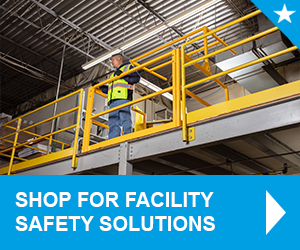
Industrial facilities can be hazardous places for employees, especially when working at height or when entering a confined space. You may be aware that you’re obligated to provide fall protection systems for employees working at height. But are you fully aware of the OSHA standards associated with confined space safety, including fall protection in, around, and within confined spaces? You should be. Because if you’re not, it could result in hefty fines or worse.
What Is a Confined Space?
You may think that a confined space is one that’s very small and restricted. Some do fit that image, but the truth is that a confined space may be very large. And if an area meets OSHA’s definition of a confined space, it needs special attention. To be confined, per OSHA, a space must meet the following three criteria:
- Large enough for a worker to enter to complete a task,
- Not intended for continuous human occupation,
- Limited means of entry and exit.
What Are Some Common Confined Spaces?
Confined space dangers exist in practically every industry. While performing repairs and maintenance, workers may need to access several types of spaces within the facility that aren’t usually entered. Areas between walls, in ceilings, and under floors can fall into this category. Some other examples of confined spaces include storage bins, holding tanks, silos, pits, and ductwork.
What Are the Hazards Associated with Confined Spaces?
The dangers that workers will encounter vary for each confined space, but keep in mind that the potential for danger begins with limited means of access. This factor can make the other common hazards in confined spaces (exposure to dangerous temperatures, high or low oxygen levels, hazardous chemicals, and more) even more serious. Many confined spaces include fall hazards, and your confined space safety plan should include thorough inspection for all potential risks before any work begins.
Do Confined Spaces Need Fall Protection Systems?
The simple answer to that question is, yes, they probably do. That is to say, OSHA fall protection regulations require you to protect workers when they’re performing duties at heights of 4′ or more, when working over dangerous equipment, or anytime there’s a fall hazard. It’s up to you to determine the fall hazards workers face when accessing a confined space and to take action to minimize them. If there’s even an inkling of a fall hazard, it’s wise to install compliant OSHA fall protection.
What Type of Fall Protection Systems Can Be Used for Confined Spaces?
OSHA fall protection rules don’t specify what kind of fall protection devices you need to use for any given situation. You must confer with a qualified safety expert to determine what types of protective equipment your spaces require. Remember that in many cases, the surrounding area will determine the type of fall protection that can be used to enter the space. A good place to start, however, is with a guardrail system and safety gate to protect the entrance to the confined space.
What Kind of Personal Fall Protection Is Right for Confined Spaces?
Each confined space is different, and you’ll have to choose the OSHA fall protection that works best for you. In addition to protecting the entrance to the confined space, you need to make sure the entrants are safe from falls while entering, working in, and exiting the space. Workers should wear properly fitted personal fall protection equipment (PPE) whenever working in confined spaces to arrest falls and to make rescue operations as quick and effective as possible. A personal fall protection system will include a full body harness, lanyard or self-retracting lifeline, and an anchor point such as a tripod.
How Can I Temporarily Provide Fall Protection?
Many of the confined spaces within your building are rarely entered, by definition, so standard fall protection systems may not already be in place. If someone needs to get inside the space, an OSHA-compliant tripod or a boom-style anchor point with a portable base can be quickly deployed to provide sturdy anchorage. When accessing spaces like manholes, tanks, wells, and holding tanks, a tripod with an overhead tie off can provide stable fall protection.
Do My Employees Need Confined Space Fall Safety Training?
OSHA requires special training for workers entering permit required confined spaces where hazards such as falls or dangerous environments exist. It’s also highly recommended that you provide training for workers entering non-permit required spaces as well. It’s vital that you begin safety training for new hires on day one and that you continue to update training at regular intervals and when safety issues are noted. Special emphasis should be put on proper use of active fall protection devices and fall protection equipment. It’s also vital that there is a strict adherence to safety protocols.
Where Can I Get OSHA-Compliant Confined Space Safety Equipment?
Confined spaces can be extremely tricky to navigate and protecting workers when they need to enter them is even trickier. You want to be 100% sure that your employees are safe no matter what kind of confined space they’re entering. You also want to be sure that your company is compliant with OSHA regulations, so you avoid costly penalties and fines.
When you need OSHA-compliant confined space safety equipment, fall protection systems, and personal fall protection equipment for your confined space work, rely on Fabenco. Our qualified safety experts will be happy to assist you when you’re ready to place an order. If you need help with determining what confined space safety equipment and other fall protection devices are necessary for your situation, we can assist you with that too.





